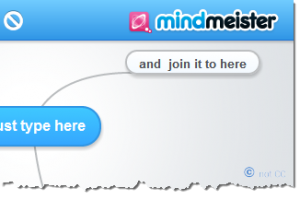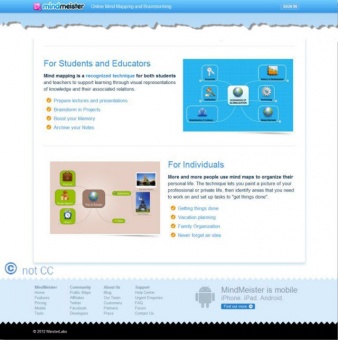Tools/Mindmeister: Difference between revisions
SimonKnight (talk | contribs) No edit summary |
mNo edit summary |
||
| Line 1: | Line 1: | ||
{{ToolInfo | {{ToolInfo | ||
|title= | |title=Mindmapping and planning | ||
|tagline= | |tagline=Mindmapping and planning - Mindmeister | ||
|image=Mindmeister1.png | |image=Mindmeister1.png | ||
|topic=mindmap | |topic=mindmap, collaborative | ||
|description= | |description= | ||
|strategy= | |strategy= | ||
Revision as of 12:31, 23 October 2012
Tool Description MINDMEISTER (mindmeister.com) is an incredibly easy mind-mapping(tool) tool. It lets you put ideas in boxes and link them together - as one does in concept mapping(tool). A box can contain a picture or a document or a link to a web site. MINDMEISTER might be used to make a ‘poster’ summarising a course. Furthermore, several people can work on the same mindmap at the same time. (edit)
Teaching Approach. Mind mapping tools can engage pupils in higher order(ta) reasoning(ta) around the visualisation(ta) of a problem, topic, or subject. Computerised tools often support embedding multimedia into these maps, providing a richer document and potential to engage pupils in creating videos, images, and text around a particular issue and organising these. Teachers could think about what sort of information pupils should include on their maps - keywords, key people, concepts, times, artefacts, etc., and whether or not the maps are used to display their knowledge of a domain (concept mapping) or to build new ideas and evaluation (brain storming). (edit)
| Tool details | |
| Title | Mindmapping and planning |
| Topic | [[Topics/Collaborative|Collaborative]], [[Topics/Mindmap|Mindmap]] |
| Licence / Cost / Platform | Web tool |
| Subject / Categories | Collaborative, ToolInfo, Mindmap |
| Teaching Ideas / Links | |
| Link | |



